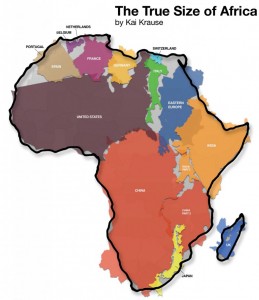$240 PER YEAR FROM SANTANDER BANK: (Thanks FWF!) Boston-based Sovereign Bank was recently acquired by Spain-based Santander Group, and consequently the bank has changed its name to Santander Bank. The makeover may or may not be related to the fact that Santander is generously offering to give you $20 per month, and all they ask for in return is a $1,500 direct deposit and two bills paid via online billpay.
I’ve yet to do this deal myself, but this FWF poster says they do credit card funding of accounts up to $500, and this one says it’s a soft credit pull, not a hard one. I guess the big question is whether an ACH counts as a direct deposit? If you have a lot of family members, this could be a nice little promotion.
$200 FREE GROCERIES FROM HARRIS TEETER: For those of you in the right areas, Harris Teeter would like you to patronize their pharmacy, so they’re willing to give you $20 of groceries for every prescription you fill, up to $200.
INFORMATIVE P2P LENDING SITE: I’ve yet to venture into P2P lending, and at this point it looks to me like there’s too much money chasing too few quality P2P loans (thank you very much, Federal Reserve), but for those of you currently in the game or thinking about it Nickel Steamroller has some interesting stuff.
ALLY BANK CHANGES CD TERMS: Once upon a time, Ally Bank had an extremely consumer-friendly policy on CDs where they would only charge you 60 days of interest as an early withdrawal penalty regardless of the CD’s term. This made Ally CDs a pretty good investment relative to other options, such as the atrocious Duke Energy PremierNotes.
Those days, alas, are now behind us, sort of. While the policy for CDs of two years or less remains unchanged, Ally has increased the penalties for CDs above three years as follows:
- 3 year CD: 90 days’ loss of interest
- 4 year CD: 120 days’ loss of interest
- 5 year CD: 150 days’ loss of interest
Which is not unreasonable, of course–it’s just not a great deal like it was before.
HOW TO LIVE ON $5,000 PER YEAR: Our latest example of extreme frugality:
More than two decades ago, then-33-year-old Dan Price had a wife, two small children, a high-interest mortgage, and a stressful job as a photojournalist in Kentucky. He worried daily about money and the workaday grind.
“I told myself, ‘buck up and pay the bills,’” said Price. “This is just the way normal life is.”
Then he learned about what he calls “the simple life.” Price read Payne Hollow, a 1974 book about author Harlan Hubbard’s rejection of modernity and his primitive home on the shore of the Ohio River. Price’s marriage dissolved soon after, and the whole family moved to Oregon, where he grew up. Price opted to move alone into a tiny cabin in the woods, then a flophouse, then a teepee, and finally into an underground “Hobbit hole” on a horse pasture near a river, where he still lives. During the winter, he decamps to Hawaii to surf and avoid the harsh weather.
Price’s version of the simple life costs $5,000 a year, which he earns from publishing a wilderness zine and doing odd jobs around Joseph, his eastern Oregon town. “I like being able to do what I want to do,” said Price, who pays $100 a year for his land. “I don’t believe in houses or mortgages. Who in their right mind would spend their lifetime paying for a building they never get to spend time in because they are always working?”
My Money Blog had a good comment on this:
I like being presented with people who make different “opt-out” decisions, even if they are extreme. The article uses terms like “intentional poor” and “voluntary poverty”. Why not just “conscious simplicity”?
…which is a good point. Sometimes we get caught up thinking a certain way and I think stories like this are helpful in realizing that there are other ways to think about things–even if you don’t want to live in a “hobbit hole” for five grand per year.
INTERESTING MAP: I’m pretty good with geography, but I just didn’t know Africa was this big. And speaking of Africa, for a harrowing travelogue I recommend Blood River: The Terrifying Journey Through the World’s Most Dangerous Country, which recounts the author’s brave and probably foolhardy trip down the civil war-ravaged Congo River. It is quite fascinating, though discouraging as well.

(Thanks to TTMYGH and Mediaite for the map.)
Recent Comments